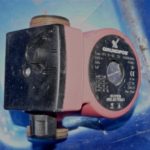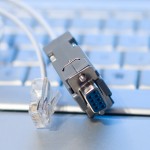HomeCamp 2 went from Wiki to reality on Saturday the 25th – A room full of people from diverse backgrounds sharing ideas on how to automate homes, monitor and reduce energy consumption and do the occasionally whacky thing like using a string of ducks that light up to monitor a virtual worlds.
Rather than trying to write up exhaustive notes, I’ll give some pointers to resources and I will link to the speakers talks as they blog them – please feel free to add links in to the comments. First, a big thank you to the sponsors, the event couldn’t have happened without them, and it just so happens that they are cool companies worth checking out too: CurrentCost, Greenmonk, Pachube , ReactionGrid and Onzo.
HomeCamp2 showed real progress since the last homecamp. I found that really encouraging, as one of the challenges I’ve seen with the way barcamp format events are run is that they end up thrashing over the same issues. The HomeCamp crowd were pushing the boundaries further, and arguments had matured and discussions deepened since the last event.
Martin, of CurrentCost, talked about an exciting little device from the currentcost stable that has a switch sensor and some analogue inputs, which it transmits to the CurrentCost meter. Short translation: The HomeCamp community can get to work using CurrentCost to monitor gas and water consumption. That’s very exciting, well, it is for me. For those on oil rather than gas, it could also be used with an oil tank sensor. As someone once said, if you can’t measure it, you can’t manage it. Well, current cost is giving a way to measure household energy consumption. Still more to do, but progress. I’m enjoying the graphs from CurrentCost at home.
There will be new software coming down the pipe, the model is that the main LCD won’t have to be plugged in all the time. It only uses about 7 Watts, so I’m not too concerned about that, but it is a good idea. There are now over half a million Current Cost units in the wild, which is great news!
Joe Baguley, active in the BCS energy monitoring group, talked about his journey in home energy monitoring. He started using the Watson, but didn’t like it. Then he discovered Green Energy Options. It is a pretty comprehensive solution, which puts clamps on every fuse in the consumer unit, meaning that it monitors every loop in the house. It also has remote units that allow remote switch on/off of appliances. There will also be a touch screen as a control point, and the software looked very sophisticated, including profiling energy use patterns. Drop Joe a note and I’m sure he’ll tell you more about the Trio unit.
The next session focussed on gas usage. Ken, chief electrical engineer at Onzo, talked about the history of gas meters and AMR, circa 1999 – and the 7 rules of gas meter logging. First rule of gas meter logging, no-one talks about gas meter logging. ;) – More seriously, there are number of challenges. It is, rightly, a tightly controlled industry and there are obvious safety issues with electrical things near gas meters. You aren’t even meant to have wires passing near gas pipes, let alone connected to them. Many gas meters are very old, and there is huge variation in meters. One of the gas meters down the road at Sandhurst academy is apparently date stamped 1922. Gas data is also privacy concern, since you can tell people’s life style from their gas consumption – e.g. when they are in and out, on holiday, etc.. – so it is best anonymized.
As Paul Tanner pointed out, unattended continious monitoring is essential. Plotting gas usage against outside temperature is a great way to assess the effectiveness of insulation and efficiency measures, but smart meters probably won’t be in full force until 2015. Some more modern meters do have sensor outputs, but there doesn’t seem to be an approved way to tap in to them. The gas companies need to step up to the plate and support the home monitoring industry. Gas is expensive, we use lots of it, and it is a finite resource. Are you out there gas folks? We want your help!
It was good to meet Mike / @Mikethebee – someone I’ve followed on Twitter for a long time, likewise good to meet @ribot. He lead a good discusion on water usage. Water meters are tricky, because not everyone has them (cue heated debate) and they location makes them tricky to connect to. Mike talked about using metering to check for leaks, drips etc… as well as monitoring usage. Optical monitors (for both water and gas) can take some tweaking, as Usman / @Pachube pointed out, but you can get them working.
Steve Lamb has a post about the morning: “Homecamp is all about using tech to reduce energy consumption” As a side note, a couple of people talked about moving to using DC, so that they can use a wind turbine and battery, without inverters, to power their computers. I’d been thinking along those lines too, but didn’t catch their names to get in touch.
Discussions after lunch focussed on Energy and there was even some virtual world to real world interaction, thanks to ReactionGrid and people were joining from the US via video stream too (we had people from Belgium and Switzerland in the room).
Jamie Andrews, formerly of thecarbonaccount fame and now at AMEE (a neutral aggregation platform – enabling data portability), who are behind the magic in the act on Co2 campaign, talked about methods of building profiles for a domestic building energy usage. There are three main information sources:
- Estimated energy performance – via SAP or RDSAP
- Behaviour Surveys
- Empirical Data
Having more data means that refined methodologies can be built. Better methodologies means better policies. AMEE are active in some interesting areas:
- Demand response – Remember not all electricity is equal.
- Carbon intensity awareness – How’s your kettle? (usually a power hungry little monster)
- Geographical models – Facilitating local grids and community co-ops.
Bart, from Flukso, talked about some interesting things they are up to. Although at the early stages, they have converted a Fonera 220 wireless router into a power monitoring device. One to watch.
Usman, of Pachube (pronounced “ptach bay” ) has built an amazing community and set of resources. Pachube takes all sorts of geo-coded data and then allows it to be shared, manipulated and graphed.
Tom Raftery joined via Skype video to give his Electricity 2.0 (which I first heard James / @Monkchips give in the US last year) – Tom’s slides, at least the version from eTech, are here. Some meaty ideas for the future of electricity.
The talk on The Web of Things was a great bit of future-that-is-happening now, thinking about the impact of more and more ‘net connected devices. From iPhones to Nabaztag and Chumby’s (a gadget I’d not heard of – slap me with a wet fish!)
I spoke about “A nudge and a wink – changing behaviours with software” – I’ll do a write up and post over at the Redcatco blog in the next few days.
All in all a great day, wonderful people and lots to mull over. I’m looking forward to Homecamp 3 already!






4 comments for “HomeCamp 2 – Saving Energy and Having Fun”